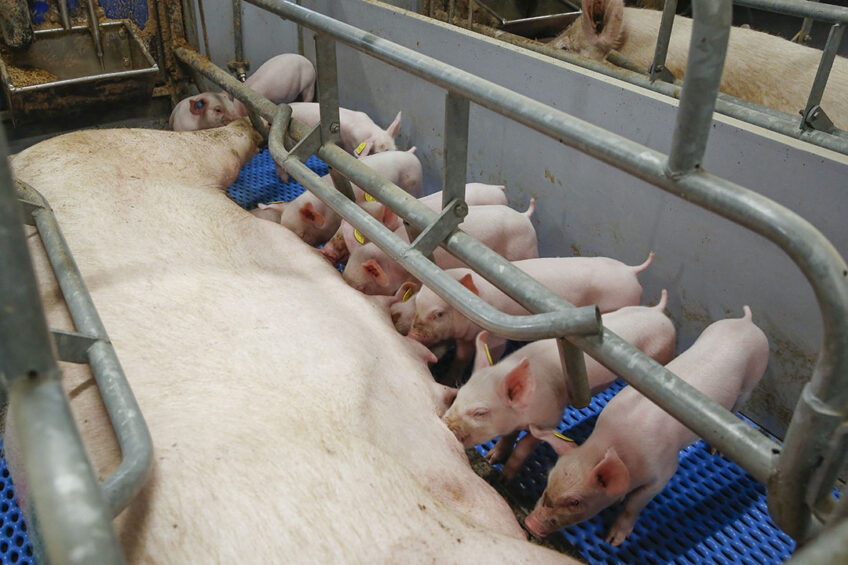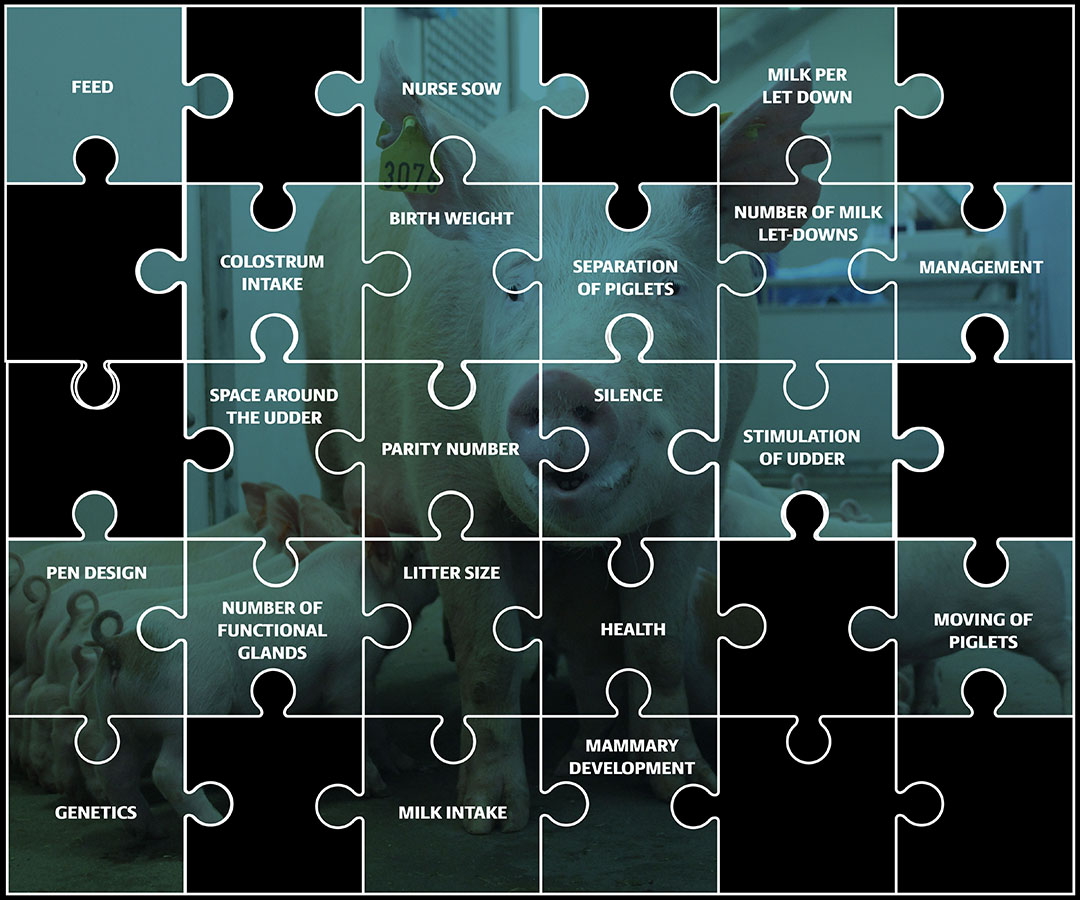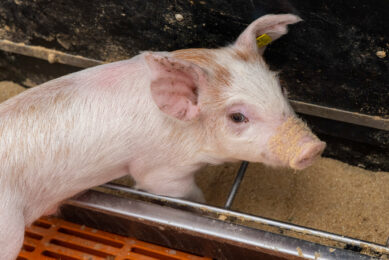Sows and piglets as milk producers and consumers

It takes 2 to tango! It also takes 2 – the sow and her litter – to ensure a high milk yield. If conditions are optimal, the highest yielding sows appear to have the potential to produce up to 25 kg milk a day. To do so, they need to be physically fit and have optimal working conditions, explains pig welfare and housing expert Vivi Aarestrup Moustsen.
At the most recent annul congress in Denmark for pig producers, Uffe Krogh (previously attached to Aarhus University and now SEGES Innovation) and Trine Friis Pedersen (SEGES Innovation) presented the “recipe” for a high-yielding sow by gathering knowledge from production, nutrition, physiology and behavioural studies.
The requirements to fulfil their potential are:
- a healthy sow;
- with many functional teats;
- appropriate housing, including space and easy access to the udder;
- a high litter size;
- large and viable piglets at birth;
- well-nourished piglets, and
- piglets being in a good body condition.
If these conditions are fulfilled, the chances of optimal stimulation of the udder and many milk let-downs are increased.
Sow milk letdown: A large puzzle
It is like a large puzzle with many pieces and many interrelationships between the pieces. First: a large variation is observed between the sows. From a positive point of view, it means that it is possible to improve the milk yield of many sows – so how to do so?

The milk producing tissue develops most in the last 2 weeks of the gestating period, so it is important that sows are fed sufficiently during that time. Besides ensuring the development of milk producing tissue, the teats must be used too to exploit their potential. This is exemplified by milk production being approximately 10% bigger in the second actation, when these glands have been used during the first lactation as well. Also, the milk production of a gland increases with the piglet birth weight, possibly because bigger piglets are more efficient at emptying a gland.
Ensuring piglets have good access to the udder
Another important piece in the puzzle is to ensure that the piglets have good access to the udder, both to get good access to the colostrum and later to have free access to the milk for the 8-10 seconds the actual milk let-down lasts.
Piglets drink about 30 times a day, and within 35 minutes after each milk letdown the udder is 80% full of milk for the next letdown. But if an alveolus is not emptied at a milk let-down there is no room for additional milk. This means the sow cannot produce milk for that alveolus, making both the number of functional teats, the unhindered access to the teat, and the presence of a piglet at milk let-down essential to increase milk production. An unused gland is equivalent to 1 kg milk a day or 7% of the potential milk yield.
A negative impact on milk production
However, we sometimes develop or adopt routine procedures to save piglets, that can have a negative impact on milk production. If piglets are kept enclosed in the creep area to avoid crushing when sows lay down after the first feedings post-farrowing, it also leads to the glands being emptied less. When piglets are moved to another litter, they need to find a teat at a new udder. This again can lead to glands not being emptied. If there are disturbances in the barn and the milk let-downs are unsuccessful, it leads to an alveolus being emptied less times.
High milk yield is significantly influenced by both the sow and her litter. However, the right management choices play an important role in maximising milk output as well.











